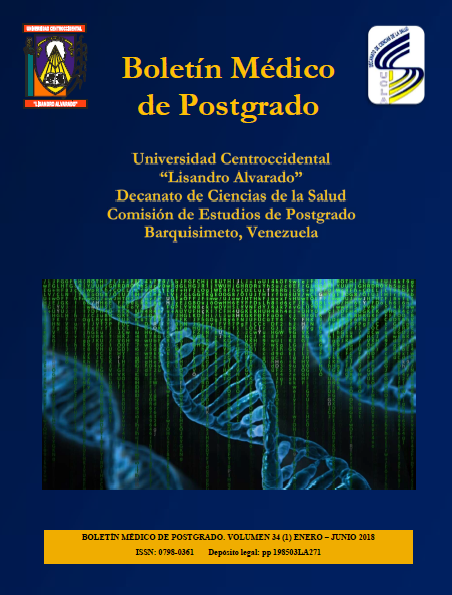neuromuscular blockade duration with succinylcholine and its correlation with levels of plasma cholinesterase in septic patients. Hospital Central Universitario Dr. Antonio María Pineda
Keywords:
Neuromuscular blockage, succinilcolina, plasmatic colinesterase, rapid sequence intubation, sepsisAbstract
Succinylcholine is a depolarizing neuromuscular drug generally used in the context of rapid sequence intubation indicated in patients in whom it is necessary to secure the airway in less than sixty seconds. A descriptive cross-sectional study was conducted in order to determine the duration of neuromuscular blockade with succinylcholine and plasma cholinesterase levels in septic patients admitted at Hospital Central Universitario Dr. Antonio Maria Pineda. A sample of 30 patients with sepsis were studied, with a mean age of 49.6 ± 17.4 years, predominantly male (70%). The main indication for abdominal surgery was intestinal obstruction (36.6%) and secondary peritonitis (23.3%). Diminished values of plasma cholinesterase were recorded in 42.8% of men and 33.3% of women; mean plasma levels were 5554.1 ± 1220.5 U/L and 4770.1 ± 1627.4 U/L, respectively. Duration of neuromuscular blockade was longer in women (66.6%) with an average duration of 14.4 ± 5.1 min and 9.4 ± 4.3 min for men. A poor correlation between cholinesterase plasmatic levels and duration as well as time of recovery of neuromuscular blockage was found. Prolonged neuromuscular blockade is due to low cholinesterase activity after administration of succinylcholine and occurs in less than half of septic patients studied.
Downloads
References
2. Ziegenhirt M, Cordero I. (2008). Pseudocolinesterasas plasmáticas. A propósito de un caso. Disponible en: http://bvs.sld.cu/revistas/scar/vol7_2_08/scar06208.htm. (Consulta: 2015, abril 18).
3. Pérez P, Moreno A, Gempeler F. Guía para la secuencia de inducción e intubación rápida en el servicio de emergencias. Universidad Méd Bogotá (Colombia) 2013; 54 (2):175-198.
4. Fathil S, Mohd S, Chéman Z, Hassan A, Ahmad , Ismail A. A prospective study of tracheal intubation in an academic emergency department in Malaysia. Int J Emerg Med 2010; 3:233-7.
5. Fernández R, Ramallo A, Carmona G, Carrasco M. Revista Española de Anestesiología y reanimación 2011; 58: 508-516.
Published
How to Cite
Issue
Section
Las opiniones expresadas por los autores no necesariamente reflejan la postura del editor de la publicación ni de la UCLA. Se autoriza la reproducción total o parcial de los textos aquí publicados, siempre y cuando se cite la fuente completa y la dirección electrónica de esta revista. Los autores(as) tienen el derecho de utilizar sus artículos para cualquier propósito siempre y cuando se realice sin fines de lucro. Los autores(as) pueden publicar en internet o cualquier otro medio la versión final aprobada de su trabajo, luego que esta ha sido publicada en esta revista.



